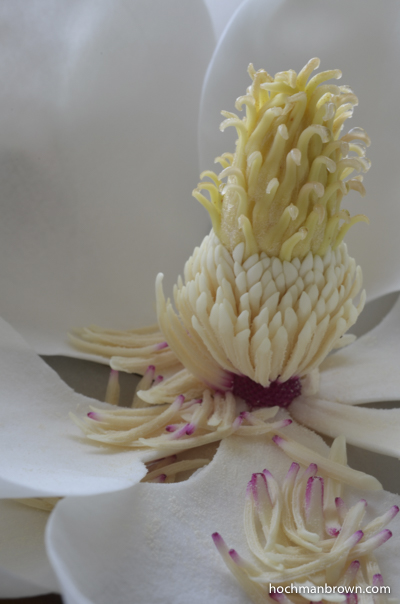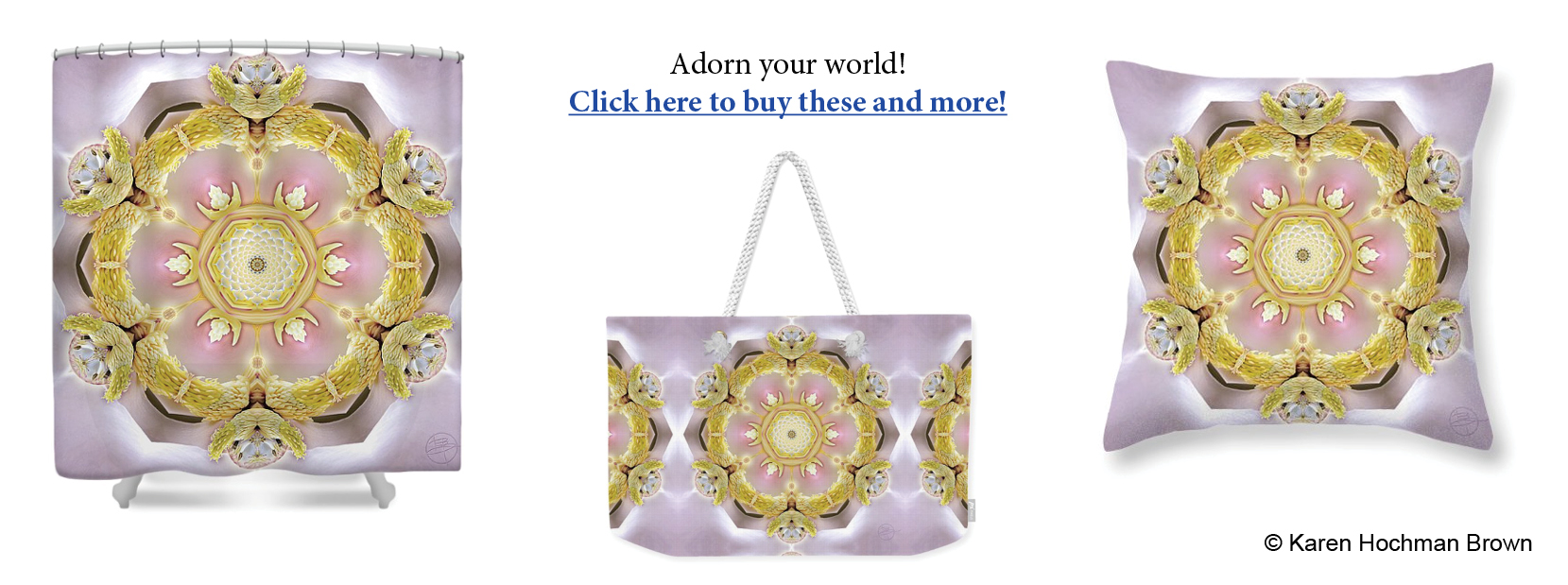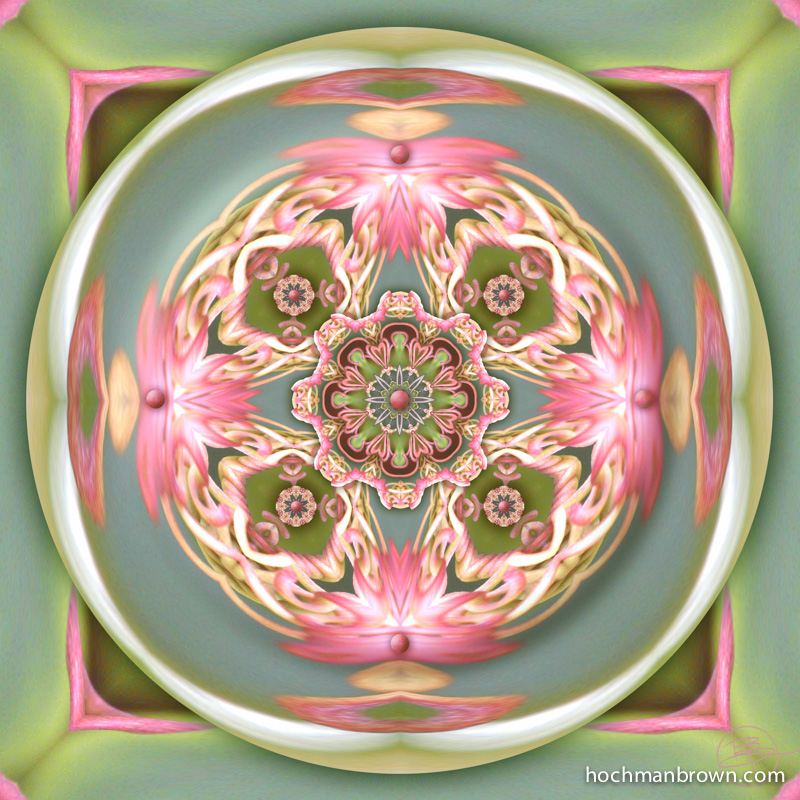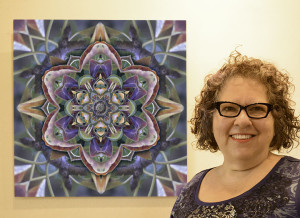I don’t have a crystal ball. I don’t know what is in the future. But the world out there is looking a little bit scary. I open up my computer and am bombarded with news of a world gone crazy—politics, gun violence, climate issues, terrorism, race, greed, corruption and more. My Facebook feed will give me nice things to look at, even beyond cute kitten videos and baby’s first steps, but I still have to wade through the muck of frightening stories. The internet is a hard place to find peace.
Animation showing the base image and layers of Magnolia Focus
I create art on my computer. Each of my pieces represents hours spent in competition with Tweets and updates and news. My calendar reminds me to make blog posts (like this one). Banners flash across my screen letting me know I have a new communication. The whole world screams for my attention.
It takes steely self-control to actually make my art. But once I begin, once I have really dived into the crystal display, magic happens. The lights blinking for my attention melt away. I find total focus. Hours go by without me even thinking once about the latest poll numbers. Amid the noisy outside world, I am able to channel inner calm and create with abandon. I am transported into a state of total focus, of joyous celebration in the act of creating.
So now, you are reading this on your device desktop. I am begging to be the distraction in a small slice of your day. The irony is not lost on me. But it is my dearest hope that you find my artwork and animations more peaceful than the news and more relevant than puppies in flower pots.






